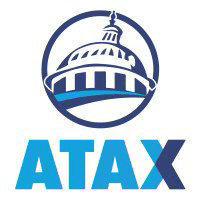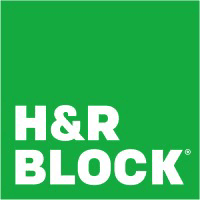Not sure if Atax is right for you?
Talk to a Franchise Advisor who can match you with your perfect franchise based on your goals, experience, and investment range.
Talk to an Expert
Atax
How much does Atax cost?
Initial Investment Range
$101,450 to $524,000
Franchise Fee
$100,000 to $500,000
We offer a franchise opportunity to you as an Area Representative to service and support franchises on our behalf, for a specified territory.
Enjoy our partial free risk analysis below
Unlock the full risk analysis to access 9 more categories covering 100+ risks.
Atax April 24, 2025 FDD Risk Analysis
Free FDD Library AI Analysis Date: August 19, 2025
DISCLAIMER: Not Legal Advice - For Informational Purposes Only. Consult With Qualified Franchise Professionals.
Franchisor Stability Risks
Start HereDisclosure of Franchisor's Financial Instability
High Risk
Explanation
The financial statements for ATAX LLC d/b/a ATAX (ATAX) show a net loss of $720,920 and an operating loss of over $1.8 million in 2024, with declining members' equity. Audited financials for 2022 and 2023 required restatement due to a significant accounting error. Furthermore, state regulators in Illinois and Maryland have imposed fee deferrals due to the company's financial condition. This combination of factors indicates potential financial instability, which could impact ATAX's ability to support you.
Potential Mitigations
- A franchise accountant must conduct a thorough review of the audited financial statements, including all notes and the recent significant operating loss.
- Ask your attorney to inquire about the specific reasons for the state-mandated fee deferrals and the steps being taken to improve financial stability.
- Your business advisor should help you assess if ATAX has sufficient capital to meet its support obligations without relying on new franchise sales.
High Franchisee Turnover
High Risk
Explanation
The FDD discloses a high turnover rate as a special risk. Analysis of Item 20 data for 2024 confirms this, showing a franchisee churn rate of approximately 21%. This was calculated from a base of 38 outlets, with 3 terminations, 2 reacquisitions by the franchisor, and 3 cessations for other reasons. A high turnover rate may suggest systemic issues, such as franchisee unprofitability, dissatisfaction, or inadequate support, representing a significant risk to your investment.
Potential Mitigations
- It is critical to contact a significant number of former franchisees from the list in Exhibit E-2 to understand their reasons for leaving the system.
- Your accountant should analyze the multi-year turnover trends in Item 20 to evaluate if the high churn is a consistent pattern.
- Discuss the specific reasons for the high turnover with the franchisor and evaluate the credibility of their explanations with your business advisor.
Rapid System Growth
Medium Risk
Explanation
The FDD indicates a period of franchise sales, with net growth in 2022 and 2023, followed by a net decline in 2024. The franchisor's parent company, Loyalty, LLC, operates numerous other franchise brands, some of which are also growing. Rapid growth can sometimes strain a franchisor's ability to provide adequate training and support. Given the recent financial losses and high turnover, you should assess if the support infrastructure is robust.
Potential Mitigations
- In discussions with current Area Representatives, it is important to inquire about the quality and responsiveness of the support they currently receive.
- A business advisor can help you question the franchisor about their capacity and plans for scaling support infrastructure for both you and the unit franchisees you support.
- Your accountant should review the financials in Item 21 to determine if ATAX has the resources to sustain both new sales and existing support obligations.
New/Unproven Franchise System
Medium Risk
Explanation
ATAX LLC was formed in 2019 and acquired the assets and brand from a predecessor who had operated since 2007. While the brand has history, ATAX as the current franchisor is relatively young. It discloses it has not operated an Area Representative business of this type itself, though its affiliates have. This, combined with recent financial losses and high turnover, presents risks associated with a newer franchisor entity proving out its long-term support capabilities and stability.
Potential Mitigations
- With your business advisor, conduct extensive due diligence on the management team's experience in both the tax industry and in managing an Area Representative franchise model.
- Engaging an accountant to scrutinize the financials is crucial to assess the capitalization and stability of this relatively new franchising entity.
- It is advisable to speak with the earliest Area Representatives in this system, as well as those in affiliate brands, about their experiences.
Possible Fad Business
Low Risk
Explanation
The business of providing tax preparation and related services is well-established and not typically considered a fad. The industry is subject to economic cycles and intense competition from national chains, local accountants, and software providers. The long-term viability of your business will likely depend more on the quality of the ATAX system, its support, and your business management skills rather than on the risk of the entire industry being a short-lived trend.
Potential Mitigations
- A business advisor can help you research the competitive landscape for tax preparation services in your specific geographic area.
- Discuss the franchisor's strategies for differentiation and long-term market relevance in a competitive industry with your business advisor.
- Your accountant can help you model the financial impact of local competition on your potential revenue as an Area Representative.
Inexperienced Management
High Risk
Explanation
The FDD discloses that the CEO of the parent company, John T. Hewitt, has an extensive and troubled litigation history from his time as CEO of a prior tax franchise, Liberty Tax. The attached SEC filing shows his former auditor, KPMG, resigned citing an “inappropriate tone at the top.” While some executives have relevant industry experience, this documented history, coupled with current litigation alleging financial misconduct, presents a significant management risk that you must carefully consider.
Potential Mitigations
- A thorough review of the litigation detailed in Item 3 and the Washington Addendum with your attorney is essential to understand the potential risks.
- It is advisable to conduct independent research on the key executives and their professional histories with help from your business advisor.
- Discussing the management team's reputation and the corporate culture with current and former franchisees is a critical due diligence step.
Private Equity Ownership
High Risk
Explanation
ATAX is part of a portfolio of franchise brands under its parent, Loyalty, LLC, which has characteristics similar to a private equity-owned structure. The CEO of the parent company is John T. Hewitt. There is a risk that decisions could prioritize returns for the parent's owners over the long-term health of the ATAX system. Pending litigation alleges that funds from ATAX have been used to support other Loyalty brands, which could be a significant conflict of interest.
Potential Mitigations
- In your discussions with current and former franchisees, inquire specifically about any changes in support, fees, or strategy that they attribute to the parent company's influence.
- Your attorney should analyze the pending litigation in Item 3 regarding the alleged commingling of funds between brands.
- A business advisor can help you assess how a portfolio structure might impact resource allocation and strategic focus for the ATAX brand.
Non-Disclosure of Parent Company
Low Risk
Explanation
This risk was not identified in the FDD package. ATAX discloses its parent company, Loyalty, LLC. However, the parent company does not provide a guarantee of the franchisor's obligations, and its financial statements are not included. The risk of an undisclosed parent is not present, but the financial health of the disclosed parent, which is not provided, remains an unknown variable. A strong parent could mitigate franchisor weakness, while a weak one could exacerbate it.
Potential Mitigations
- Your attorney should confirm the corporate structure and the relationship between ATAX and its parent, Loyalty, LLC.
- An accountant can help you assess the risks of ATAX's financial position, particularly in the absence of a parent company financial guarantee.
- It may be beneficial to research the parent company and its other business holdings with your business advisor.
Predecessor History Issues
Medium Risk
Explanation
The FDD discloses that ATAX LLC acquired the assets of a predecessor, ATAX Franchise, Inc., in 2019. This predecessor had a history of franchising since 2007. The disclosure appears to properly identify the predecessor. However, the extensive litigation history involving the parent company's CEO, John T. Hewitt, stems from his time at another, unrelated predecessor company (Liberty Tax), the history of which is highly relevant to assessing management risk.
Potential Mitigations
- Your attorney should carefully review all disclosed information about both the direct predecessor and the history of key management from other ventures.
- When speaking with long-term franchisees, asking about their experience under the predecessor entity could provide valuable context.
- A business advisor can help you research the reputation and track record of any predecessor entities.
Pattern of Litigation
High Risk
Explanation
The FDD discloses a significant and concerning pattern of litigation. There is a pending lawsuit by investors against ATAX and its parent's CEO, John T. Hewitt, alleging fraud and conversion of company funds. Item 3 also details Mr. Hewitt's extensive, troubling litigation history at his former company, including a DOJ action and a rare auditor resignation citing an “inappropriate tone at the top.” This history suggests a potential pattern of governance and legal issues following key management.
Potential Mitigations
- Engaging an attorney to perform a detailed analysis of the litigation history in Item 3 and its exhibits is absolutely critical.
- A thorough discussion with your business advisor is needed to weigh the risks associated with a brand led by management with such a history.
- You should treat this extensive litigation history as a major red flag and proceed with extreme caution.
Disclosure & Representation Risks
Example Risk: Franchisee Financial Obligations
Blue Risk
Explanation
This risk involves the financial obligations that a franchisee must meet, including initial fees, ongoing royalties, and other required payments. Understanding these obligations is crucial for long-term success.
Potential Mitigations
- Carefully review the Franchise Disclosure Document (FDD) and consult with a franchise attorney to fully understand all financial commitments before signing.
- Conduct regular risk assessments
- Implement monitoring and reporting systems
Unlock Full Risk Analysis
Purchase the complete risk review to see all 102 risks across all 10 categories.
Financial & Fee Risks
Example Risk: Franchisee Financial Obligations
Blue Risk
Explanation
This risk involves the financial obligations that a franchisee must meet, including initial fees, ongoing royalties, and other required payments. Understanding these obligations is crucial for long-term success.
Potential Mitigations
- Carefully review the Franchise Disclosure Document (FDD) and consult with a franchise attorney to fully understand all financial commitments before signing.
- Conduct regular risk assessments
- Implement monitoring and reporting systems
Unlock Full Risk Analysis
Purchase the complete risk review to see all 102 risks across all 10 categories.
Legal & Contract Risks
Example Risk: Franchisee Financial Obligations
Blue Risk
Explanation
This risk involves the financial obligations that a franchisee must meet, including initial fees, ongoing royalties, and other required payments. Understanding these obligations is crucial for long-term success.
Potential Mitigations
- Carefully review the Franchise Disclosure Document (FDD) and consult with a franchise attorney to fully understand all financial commitments before signing.
- Conduct regular risk assessments
- Implement monitoring and reporting systems
Unlock Full Risk Analysis
Purchase the complete risk review to see all 102 risks across all 10 categories.
Territory & Competition Risks
Example Risk: Franchisee Financial Obligations
Blue Risk
Explanation
This risk involves the financial obligations that a franchisee must meet, including initial fees, ongoing royalties, and other required payments. Understanding these obligations is crucial for long-term success.
Potential Mitigations
- Carefully review the Franchise Disclosure Document (FDD) and consult with a franchise attorney to fully understand all financial commitments before signing.
- Conduct regular risk assessments
- Implement monitoring and reporting systems
Unlock Full Risk Analysis
Purchase the complete risk review to see all 102 risks across all 10 categories.
Regulatory & Compliance Risks
Example Risk: Franchisee Financial Obligations
Blue Risk
Explanation
This risk involves the financial obligations that a franchisee must meet, including initial fees, ongoing royalties, and other required payments. Understanding these obligations is crucial for long-term success.
Potential Mitigations
- Carefully review the Franchise Disclosure Document (FDD) and consult with a franchise attorney to fully understand all financial commitments before signing.
- Conduct regular risk assessments
- Implement monitoring and reporting systems
Unlock Full Risk Analysis
Purchase the complete risk review to see all 102 risks across all 10 categories.
Franchisor Support Risks
Example Risk: Franchisee Financial Obligations
Blue Risk
Explanation
This risk involves the financial obligations that a franchisee must meet, including initial fees, ongoing royalties, and other required payments. Understanding these obligations is crucial for long-term success.
Potential Mitigations
- Carefully review the Franchise Disclosure Document (FDD) and consult with a franchise attorney to fully understand all financial commitments before signing.
- Conduct regular risk assessments
- Implement monitoring and reporting systems
Unlock Full Risk Analysis
Purchase the complete risk review to see all 102 risks across all 10 categories.
Operational Control Risks
Example Risk: Franchisee Financial Obligations
Blue Risk
Explanation
This risk involves the financial obligations that a franchisee must meet, including initial fees, ongoing royalties, and other required payments. Understanding these obligations is crucial for long-term success.
Potential Mitigations
- Carefully review the Franchise Disclosure Document (FDD) and consult with a franchise attorney to fully understand all financial commitments before signing.
- Conduct regular risk assessments
- Implement monitoring and reporting systems
Unlock Full Risk Analysis
Purchase the complete risk review to see all 102 risks across all 10 categories.
Term & Exit Risks
Example Risk: Franchisee Financial Obligations
Blue Risk
Explanation
This risk involves the financial obligations that a franchisee must meet, including initial fees, ongoing royalties, and other required payments. Understanding these obligations is crucial for long-term success.
Potential Mitigations
- Carefully review the Franchise Disclosure Document (FDD) and consult with a franchise attorney to fully understand all financial commitments before signing.
- Conduct regular risk assessments
- Implement monitoring and reporting systems
Unlock Full Risk Analysis
Purchase the complete risk review to see all 102 risks across all 10 categories.
Miscellaneous Risks
Example Risk: Franchisee Financial Obligations
Blue Risk
Explanation
This risk involves the financial obligations that a franchisee must meet, including initial fees, ongoing royalties, and other required payments. Understanding these obligations is crucial for long-term success.
Potential Mitigations
- Carefully review the Franchise Disclosure Document (FDD) and consult with a franchise attorney to fully understand all financial commitments before signing.
- Conduct regular risk assessments
- Implement monitoring and reporting systems
Unlock Full Risk Analysis
Purchase the complete risk review to see all 102 risks across all 10 categories.






